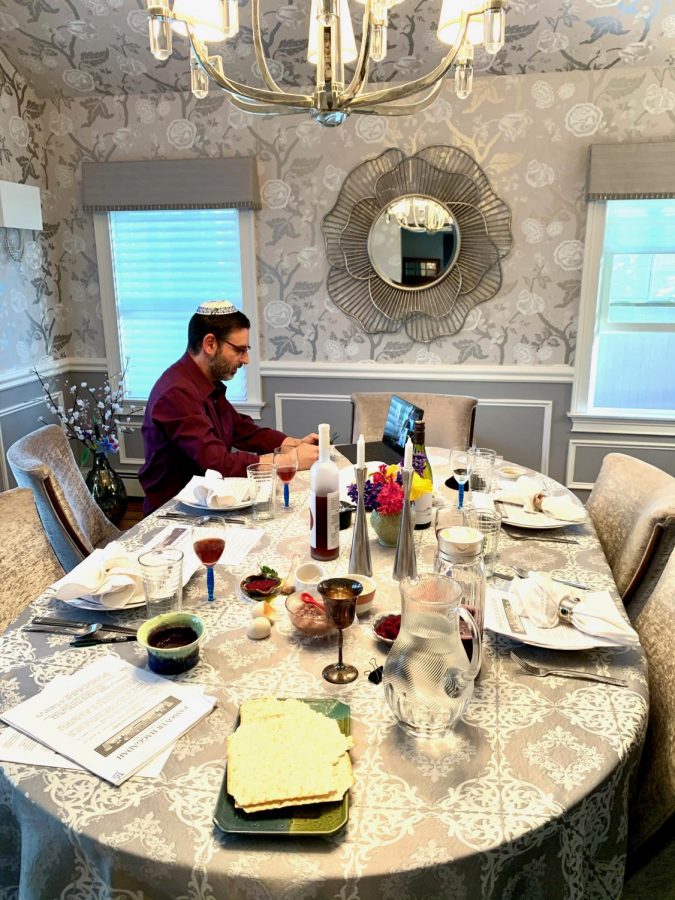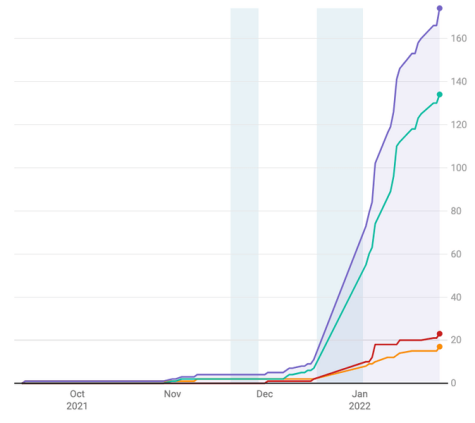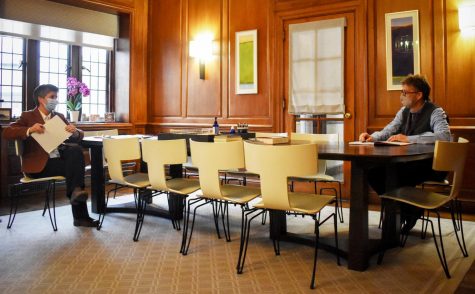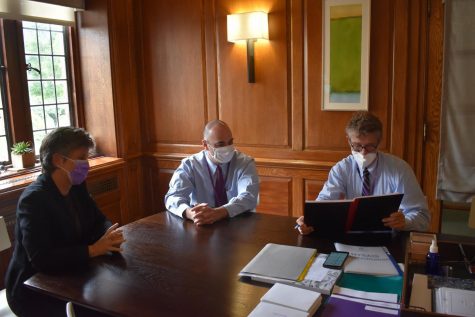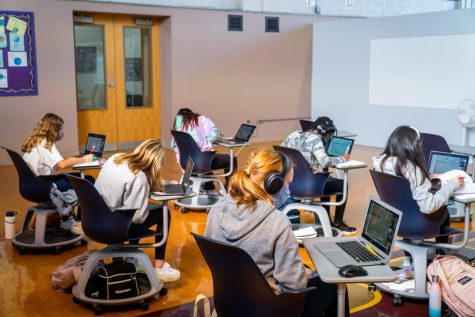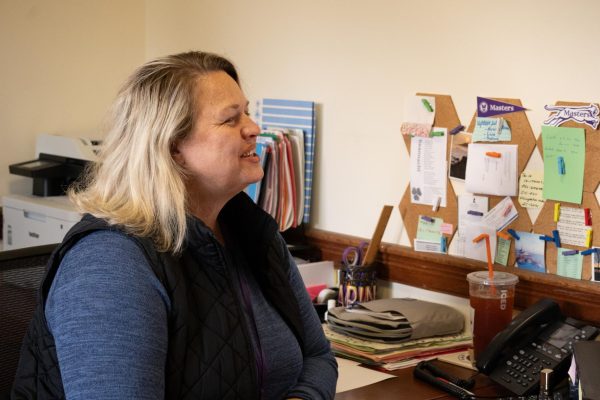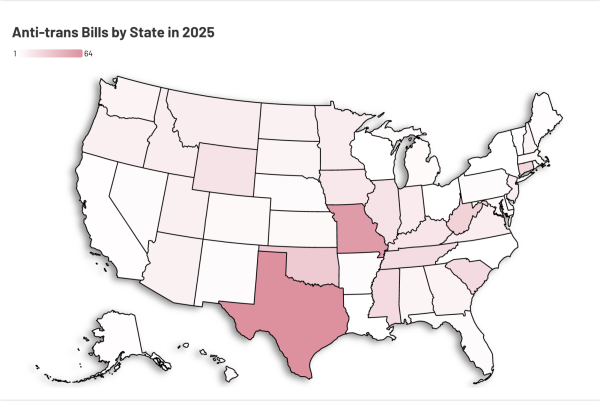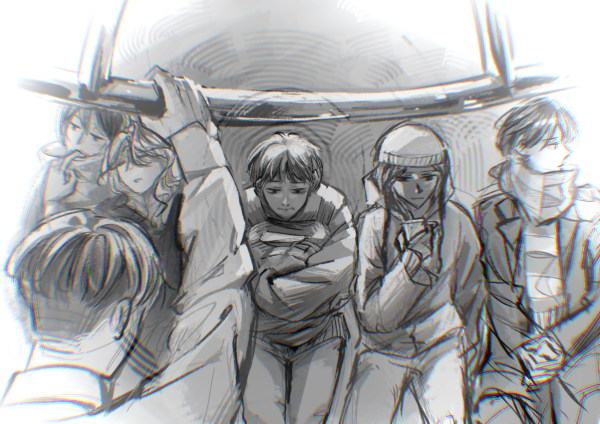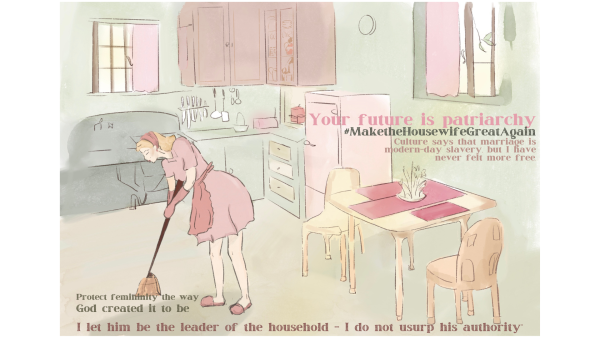Recent religious holidays provide outlet for creativity and hope
A parent of a Masters family prepares to launch a “zoom” seder. Due to the ongoing coronavirus pandemic, many had to adapt when celebrating the recent Passover and Holy Week holidays. Additionally, religious leaders have been available to provide virtual support to those struggling during this time.
The coronavirus pandemic has altered all facets of daily life and religion has been no exception; with places of worship across the country closed off to congregants, people utilized the friendly confines of their homes, technology and a little bit of creativity to remain connected during the most recent religious holidays.
Karen Brown, director of equity and inclusion, had Easter dinner at home with her son and reflected on her experience.
“It was strange, not being able to worship in church.” Brown especially missed the “uplifting” musical element that the churches she attends often incorporate into the service and said, “there was a sense of loss, especially during a time where you want to have the feeling of support from where you get your spirituality from.”
Sophomore Danielle “Blu” Gantcher saw her Passover seder, which typically includes 30 people, diminished to just her immediate family; nevertheless, she still managed to connect with loved ones, as they did various segments of the seder on Zoom.
While the second night of Passover was similar, there were many firsts in the Gantcher household.
“The kids actually got to lead the seder for a change,” she said. “We were also able to have really good conversations and the cleanup was way easier than normal!”
From the pastoral perspective, Reverend Benjamin DeHart is used to leading Easter mass in front of 600 people; but this year, he and the other members of the Parish of the Calvary – St. George’s were practicing social distancing and live-streamed the service on their website.
Although the church, which is located in New York, NY, couldn’t do communion, among other traditions this year, the Reverend said that there was still an effort to get people involved.
“We had different people record themselves acting out different parts of the Passion [life of Jesus Christ] story and then we put it all together,” he said.
Similarly, Gantcher and her siblings put together a performance of the Passover story.
“My bunny was Moses and we floated him down the Nile in a basket, and my dog was Pharaoh. In the end, it was a lot of fun,” she said.
Senior Sarah Faber also did a “zoom” seder and utilized her free time at home to get creative.
She said, “We weren’t really planning on doing Passover this year, but I was super bored and wanted to plan something, so I found a bunch of Haggadahs [Jewish text for a seder] online and made my own on InDesign.” Faber’s Haggadah even included a “Where’s Waldo” page for participants to find the afikomen – the half-piece of matzah that’s usually hidden at the seder for the children to discover.
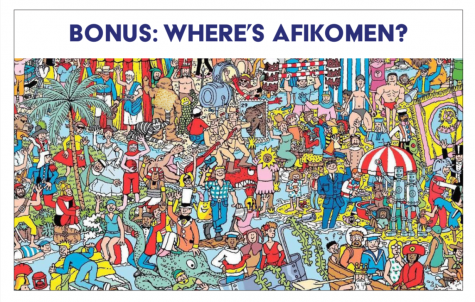
Aside from the most recent holidays, DeHart and other religious leaders have found additional ways to engage with the community, and are providing ample opportunities to connect with congregants.
DeHart said, “It’s around the clock right now. We are calling everyone we have a number for. A lot of people are very anxious… but mainly my job is to listen.” DeHart also holds daily morning and evening prayer sessions on Facebook Live.
Rabbi Jason Nevarez of Temple Shaaray Tefila in Bedford Corners, NY explained what his synagogue has done to adapt amid the pandemic – or plague, as it is referred to in Judaism.
“It’s important for people to mourn the loss of connection. There’s no emotion that’s right or wrong here,” he said. “On the other hand, we’ve created a virtual environment for almost everything we do. Even though we are physically distanced, we can still feel a sense of community… Creating spiritually nourishing moments is really important.”
Nevarez noted that Friday Shabbat services at Shaaray Tefila attendance has increased by more than 300 percent since the livestreams began last month.
The Rabbi, who holds open hours daily for which congregants can schedule video calls to converse with him, has spoken with people who have contracted COVID-19. During these discussions, he chooses not to focus on the virus itself, but on “where they need the most lift.”
He said, “I don’t like to say, ‘you will get through this.’ I encourage people to take things step by step – it’s about presence and finding what bring you comfort right now.”
Easter commemorates the resurrection of Jesus Christ and the name ‘Easter’ is believed to come from Eostre – the Goddess of rebirth.
Brown noted that the ministers have used their sermons to offer support for viewers in this challenging time. She explained her takeaway.
“You can’t keep looking at this as a negative, otherwise it’s just going to keep being a negative.” Brown continued, “There are so many people dealing with hardships right now, but you really need to find any positivity that you can in this time. Easter brought back the fact that there is still hope that the day will come when we get out of this.”
Achieving freedom is also central to the Passover story which recalls the Jews’ escape from enslavement in Egypt.
Gantcher said, “I thought it was kind of ironic that the whole Passover seder is about freedom, but we’re all stuck inside our homes. When we said, ‘Next year in Jerusalem’ [the typical end to any Passover seder], I think we all really meant it.”
Nevaraz said, “The plague along with Passover reminds us of what’s important in life – love, friendship, good health, and living with hope.”
Though it can be difficult to make sense of all the devastation that has occured, Nevaraz tries to move forward.
“I don’t couch it in blame or retribution. Rather, I couch it in resilience,” he said. “This is a global oppression and it’s out of our control. We have to surrender to it and instead, think about strengthening our ‘resilience muscle’ – that’s my language.”
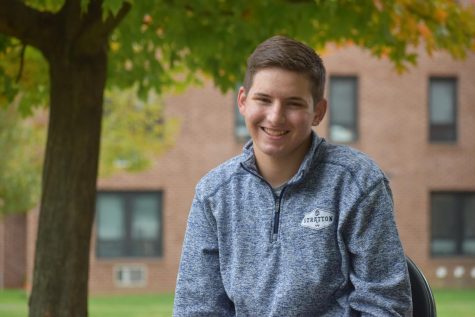
Logan Schiciano, a senior, is currently the lead producer of Tower Broadcast News (TBN). As a junior, Schiciano was one of two editors-in-chief of Tower...
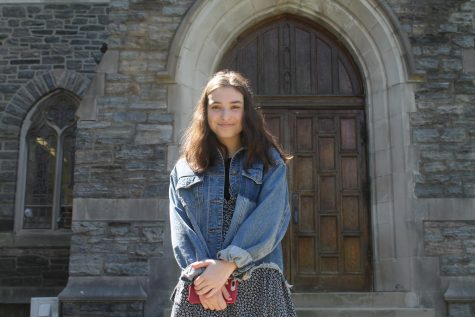
Sarah Faber, a staff writer on Tower, started her journalism career as a freshman with “Faber’s Foods,” a blog on Tower’s web page. After realizing...




